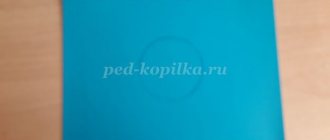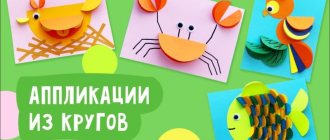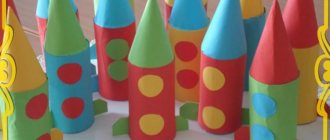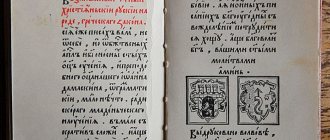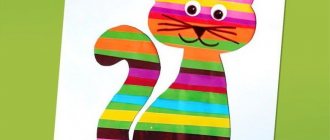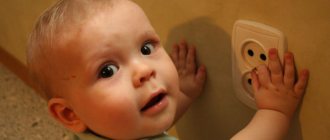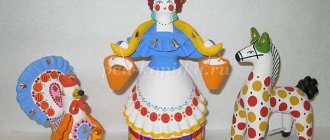Summary of GCD on application for children of the preparatory group. "Appliances"
Summary of GCD on application for children of the preparatory group. "Appliances". Training tasks:
consolidate the ability to cut out objects in round, oval, triangular shapes and paste images of a familiar object, create a simple composition, measure images with the size of the sheet, beautifully arrange the image on the sheet;
Developmental tasks:
develop imagination, creativity, fine motor skills;
Educational objectives:
to cultivate aesthetic taste when selecting paper of matching colors to compose an image.
Material:
colored paper, a sheet of white paper, scissors, glue, oilcloth, napkin.
Equipment:
letter from Cinderella, illustrations of floor lamps.
Progress of the lesson:
Guys!
I came to work today and there’s a letter on my desk, let’s see who it’s from? From Cinderella, what is written there? (letter) “Hello guys. There was a real disaster in my castle. All household appliances and all the lamps in the house burned out. I’m getting ready to go to the ball, but before that I need to do all the housework. How can I do everything if the house is so dark? Help me please". Educator: Well, guys, let's help Cinderella? (yes) Educator: What are “household appliances”? (what is used to make homework easier) Educator: Where can you buy “household appliances”? (in a store, at the market) Educator: That's right, in a household appliances store. Well, we’re going to the land of “Household Appliances,” but to get there, you’ll have to answer questions about what these electrical appliances are for. Ball game: “Continue the sentence”
A vacuum cleaner is needed to... Meat grinder... Hairdryer... Refrigerator... Mixer... Washing machine... Floor lamp...
Main part:
Educator: I suggest you make “household appliances” yourself, a floor lamp and give it to Cinderella.
To do this, you have blanks of colored paper on your plate. What geometric figure do they resemble? (rectangle) Educator: You need to choose what shape your floor lamp will be: round, triangular, oval, flower-shaped. When you cut out all the parts, lay them out on a sheet of paper and look at where you will glue them. Only then spread the parts on the oilcloth, glue them, remove excess glue with a napkin. Don’t forget to put the scissors in a glass (repeat the rules for working with scissors), and the trimmings in a plate. Completing of the work. Result:
Guys, look how wonderful our floor lamps turned out. Now let's put them in an envelope and send them to Cinderella.
Progress of the lesson
Educator: Guys, Pinocchio came to visit us today.
Pinocchio: Hello guys! I really want to help my toy friends who live in your group. My friends really want a TV in your group, because when you go home they get very bored. How nice it would be if they watched their favorite cartoons in the evenings!
Educator: Guys, let's help Pinocchio and draw TVs for our toys?
Educator: but first Pinocchio, you guess the riddle.
He will tell you about the weather.
How are they not cramped there?
Pinocchio: I guessed it! This is TV!
Educator: What is a TV?
Educator: A television is a special device for transmitting a sound image at a distance. Probably both adults and children love to watch TV shows. Where does the image on the screen come from? The picture we see is created in television centers, turns into a signal, and is picked up by an antenna. From the antenna, the signal travels through wires to the TV.
What needs to be done to make the TV start working?
What do we call devices powered by current?
Remember what rules for handling electrical appliances , namely TVs, we must follow?
Rules for using TV
• Do not touch the TV while it is running with wet hands.
• Do not touch faulty wires with your hands.
• Adults must turn the TV on and off.
Fabric butterfly applique
It’s not difficult to do this craft with children. A large assortment of fabrics, colors and methods of execution will motivate children to choose and make creative decisions.
For the first manufacturing method you will need:
- Butterfly stencil
- Scissors
- Chalk
- Any fabric, but it is better to use guipure. The applique will look voluminous, and the corrugated structure of the fabric will give beautiful shimmer.
How to do:
- We apply the stencil to the inside of the canvas, trace it and cut it out.
For production using the second method:
- Scissors
- Guipure
Cut out a rectangle and a strip 3 cm wide.
Fold it like an accordion and tie it in the center with a prepared fabric ribbon (you can use a different color for contrast).
The knot should be at the top so that the free edges of the ribbon form the “antennae” of the butterfly.
Felt butterfly applique
Butterflies made from felt are placed on the finger and “move.” They are often used as an attribute when staging musical matinees with children.
Materials:
- Two butterfly stencils. One must be larger than the other.
- Chalk
- Scissors
- Glue
- Felt in two colors
- Thread and needle
- Soft hair ties
- Beads for decoration (optional)
How to do:
- Place the pieces of felt on a flat surface with the back side.
- Trace stencils, larger on one color canvas, smaller on the other. Cut out.
- We make a body (oval and circle) from felt of the same color that we chose for the large stencil.
- We connect all the resulting parts. We glue the body to the small butterfly, then attach it to the large butterfly.
- We sew the resulting bright and multi-level composition to a hair elastic; it will be used as a ring for the child’s finger.
- If desired, you can decorate with beads or rhinestones.
Car applique
This option is good for all ages. To inspire your child, you can take a short walk around the city where he can watch the traffic. Next, it is recommended to study the master class:
- Parents often develop creativity through the “observe and play” technique.
- Children see the world differently, and with the help of art they can show it to adults (by the way, appliqué often helps to identify experiences or concerns; psychologists use this method).
- To work you will need colored paper, safety scissors, glue stick, rulers, compass.
- Using a compass, wheels and the sun are drawn on black paper.
- Next, using a ruler, the main elements are formed - trunk, windows, doors, body, etc.
- It is necessary to make a background - it is done using colored paper.
- Clouds or gas emissions are made using the torn technique - colored material is carefully torn, the child can create any interesting shape.
- Next, all the details are cut out and folded onto the background, after which they are glued.
Such work can even be submitted to a competition in kindergarten.
Butterfly applique using cutting method
The purpose of the lesson is to consolidate the skills of transforming one figure from another. Familiarization and practice of making crafts using the trimming method.
Necessary:
- Volumetric butterfly stencil
- Colored cardboard.
- Multi-colored napkins
- Wand
- Scissors
- Glue
Progress of the lesson:
- Glue the butterfly template to the cardboard base.
- Children cut napkins into approximately 1 cm squares.
- The stick is placed in the middle and the square is crushed. Then roll it between your fingers until you get a tube.
- Place the resulting tubes on a stencil, which is pre-lubricated with glue in small areas.
The butterfly applique made from napkins is light, airy and very beautiful.
Three-dimensional butterfly applique
A simple technique that gives children the opportunity to plan the appearance of a future craft using their imagination. Develops visual memory well.
Materials:
- Scissors
- Glue
- Ready butterfly stencil
- Colored paper.
Performance:
- There is some leftover colored paper left over from previous classes. Let's show children how they can be used rationally. Cut strips about 10 centimeters long and 1.5 cm wide. Glue the ends together and get loops.
- We lay out the loops on the stencil starting from the edge to the center. The child must independently plan the alternation of colors. After that, lubricate the stencil in small areas with glue and apply the parts in the same order.
- We glue a tube from a dark-colored scrap and secure it in the center.
Butterfly applications from scrap materials
As part of such an activity, children can be asked to use their imagination to name any materials from which a butterfly can be made.
For students in the senior group, a butterfly applique in this format is an excellent opportunity to develop skills in planning a future product; the child makes his own decision and learns to justify it. And also, a rationalized approach is being developed.
Types of butterfly applique from scrap materials:
- Leaves.
You can use two maple sheets of the same size, glued to the paper surface at the joints. How it was done in class using stencils of palms.
If these are small leaves of shrubs, then they are glued onto the prepared stencil in the same way as a tear-off applique is made.
- Candy wrappers.
The butterflies turn out bright. They can be folded like an accordion like fabric ones or worked like with colored paper.
The list of available tools is not extensive.
The child must choose not only materials, but also any method of making the applique. By the age of 6 years, they master the above techniques and the use of improvised means in application is a way of consolidating and generalizing previously acquired knowledge and skills.
The creative process helps the child develop as a person. The concept of beauty and attractiveness appears. Based on the results of their own work, children learn to evaluate their work.
The development of combinatorial and compositional skills, attentiveness, perseverance, accuracy, correct aesthetic perception of the surrounding world is the result of practicing applique.
The more time devoted to such activities, the greater the contribution of teachers to the formation of a harmonious and comprehensively developed personality of the child.
